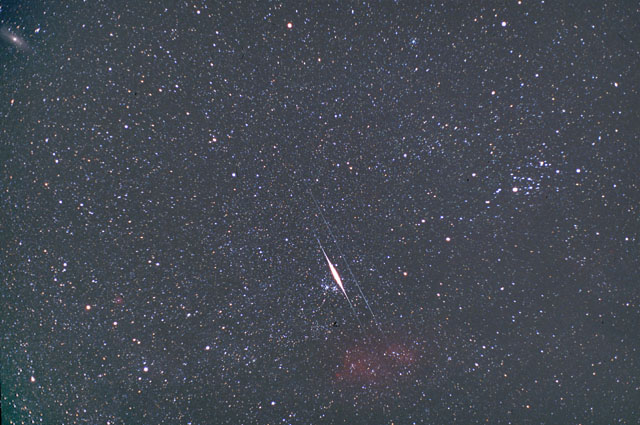
Double Iridium Satellite Flare

Copyright 2002 Thom Iwancio
This image is of sunlight reflecting from the shiny antenna surfaces of two Iridium satellites as they move across the sky. This phenomena is known as an "Iridium Flare" and predictions of them for any area can be found at www.heavens-above.com. More information on Iridium flares can be found at http://satobs.org/iridium.html#flare. In this shot, two members of the Iridium satellite fleet passed very close to the same area only a few minutes apart. The brighter, at peak magnitude -1 is Iridium 95 and the dimmer one , at magnitude 0 is Iridium 59.
Other interesting items in this photo are the Andromeda Galaxy, M31, in the upper left corner. Just below the two flares are two regions of red nebulosity, IC 1805 and IC 1848, also known as the "Heart and Soul" nebulae. Immediately to the left of the brighter flare is the Double Cluster, NGC 869 and NGC 864. The constellation Cassiopeia lies in the lower left corner and open cluster M34 lies near the top of the frame, just to the right of the middle. The bright open cluster on the right of the frame is an un-named grouping of stars, the brightest being Mirfak in the constellation Perseus.
Date/Location:
December 1, 2002 Iwancio-Hodge
Observatory Bethune, SC
Instrument: Olympus OM-1 w/ 50mm lens piggyback on Orion 8" Eq Newtonian
Focal Ratio: f 2
Guiding: Auto with homebrew webcam autoguider through main
scope
Conditions: Visually clear
Weather: 48 F, Still wind
Film: Kodak Elite Chrome 200
Exposure: 1 x 10 minutes
Filters: None
Processing: Photoshop 6